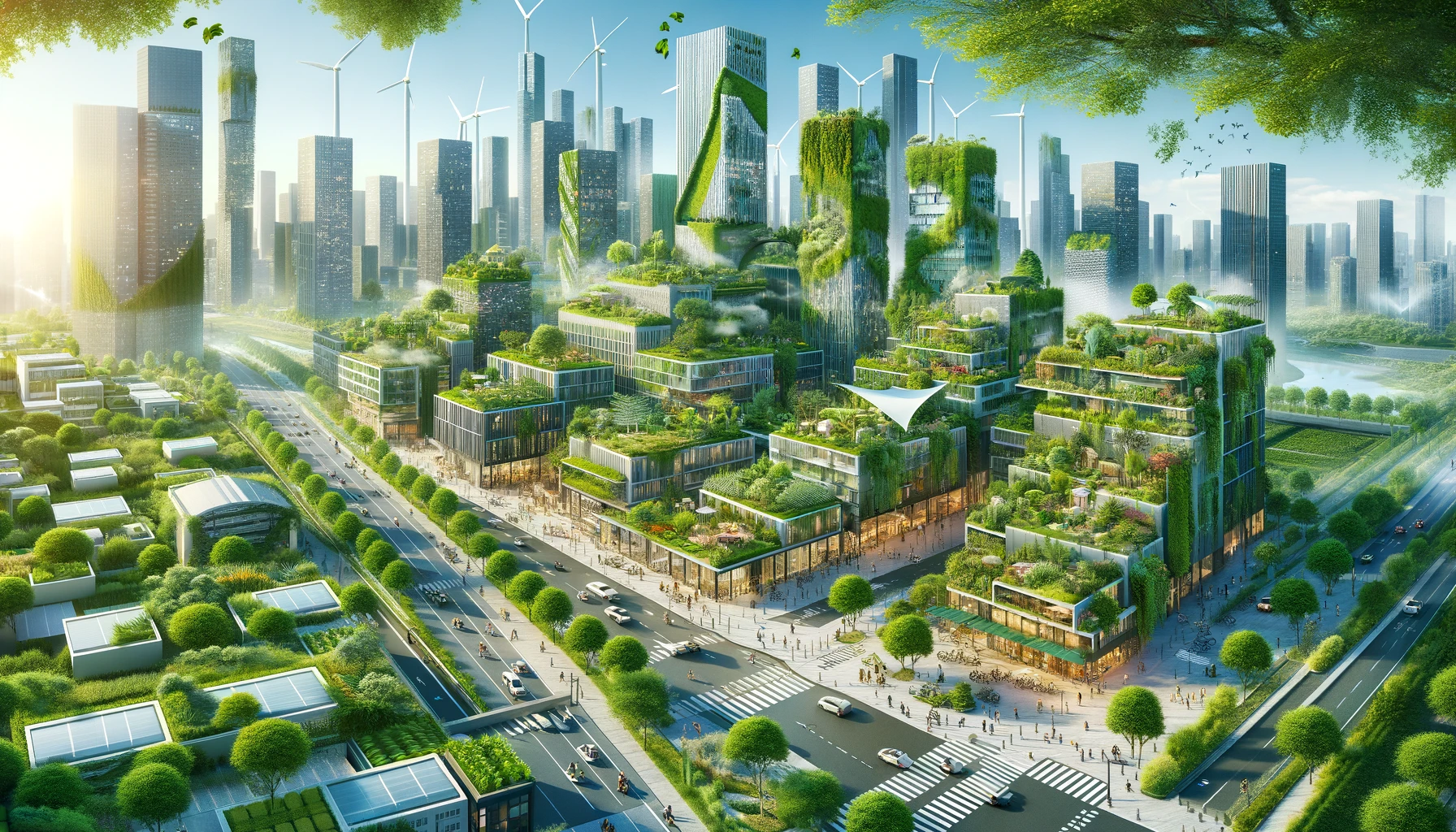As urban populations continue to rise, the need for sustainable city planning has never been more critical. Green cities, with their innovative integration of nature and urban development, offer a blueprint for the future. These environments prioritize the health of the planet and its people, creating spaces where nature and technology coexist. This article explores the principles of green urban design and its pivotal role in forging sustainable futures for our urban landscapes.
The Heart of Green Urban Design
At the core of green urban design lies the commitment to minimize environmental impact while enhancing the quality of urban life. This is achieved through the incorporation of green spaces, sustainable materials, and renewable energy sources within city planning. Rooftop gardens and green walls transform buildings into living ecosystems, providing not only beauty but also reducing urban heat islands and improving air quality. Pedestrian-friendly pathways and bicycle lanes encourage active, low-carbon modes of transportation, making cities more accessible and reducing reliance on fossil fuels.
Sustainable urban design extends beyond the visual, integrating systems that support the efficient use of resources. Rainwater harvesting, sustainable waste management, and energy-efficient building designs are fundamental components. These elements work together to create resilient urban environments that can adapt to the challenges of climate change and urbanization.
The Role of Public Spaces in Sustainable Cities
Public spaces play a crucial role in the vitality of green cities. Parks, squares, and waterfronts offer communal areas that improve mental and physical health, foster community, and provide spaces for biodiversity within the urban fabric. These areas are essential for social interaction, recreation, and connecting with nature, acting as the lungs of the city. By prioritizing the development of public spaces, cities can enhance the well-being of their inhabitants while promoting environmental stewardship.
Technology and Innovation in Urban Sustainability
The advancement of technology has opened new avenues for sustainable urban development. Smart city technologies, such as intelligent lighting systems, energy-efficient public transport, and digital platforms for city services, optimize resource use and improve urban living. These innovations allow for real-time management of city operations, making urban areas more livable and responsive to the needs of their residents.
Green architecture and building practices also contribute to the sustainability of urban areas. Buildings designed with passive solar principles, natural ventilation, and green roofs not only reduce energy consumption but also contribute to the aesthetic and ecological richness of the cityscape.
Conclusion
Green cities represent the intersection of ecology, technology, and community, offering a vision for a sustainable urban future. By integrating green spaces, sustainable materials, and smart technologies into urban planning, cities can become more livable, resilient, and environmentally friendly. The journey towards green urbanism is a collaborative effort, requiring the participation of city planners, architects, businesses, and citizens alike. As we move forward, the principles of green design will be instrumental in shaping cities that not only thrive but also respect the delicate balance of our global ecosystem.

